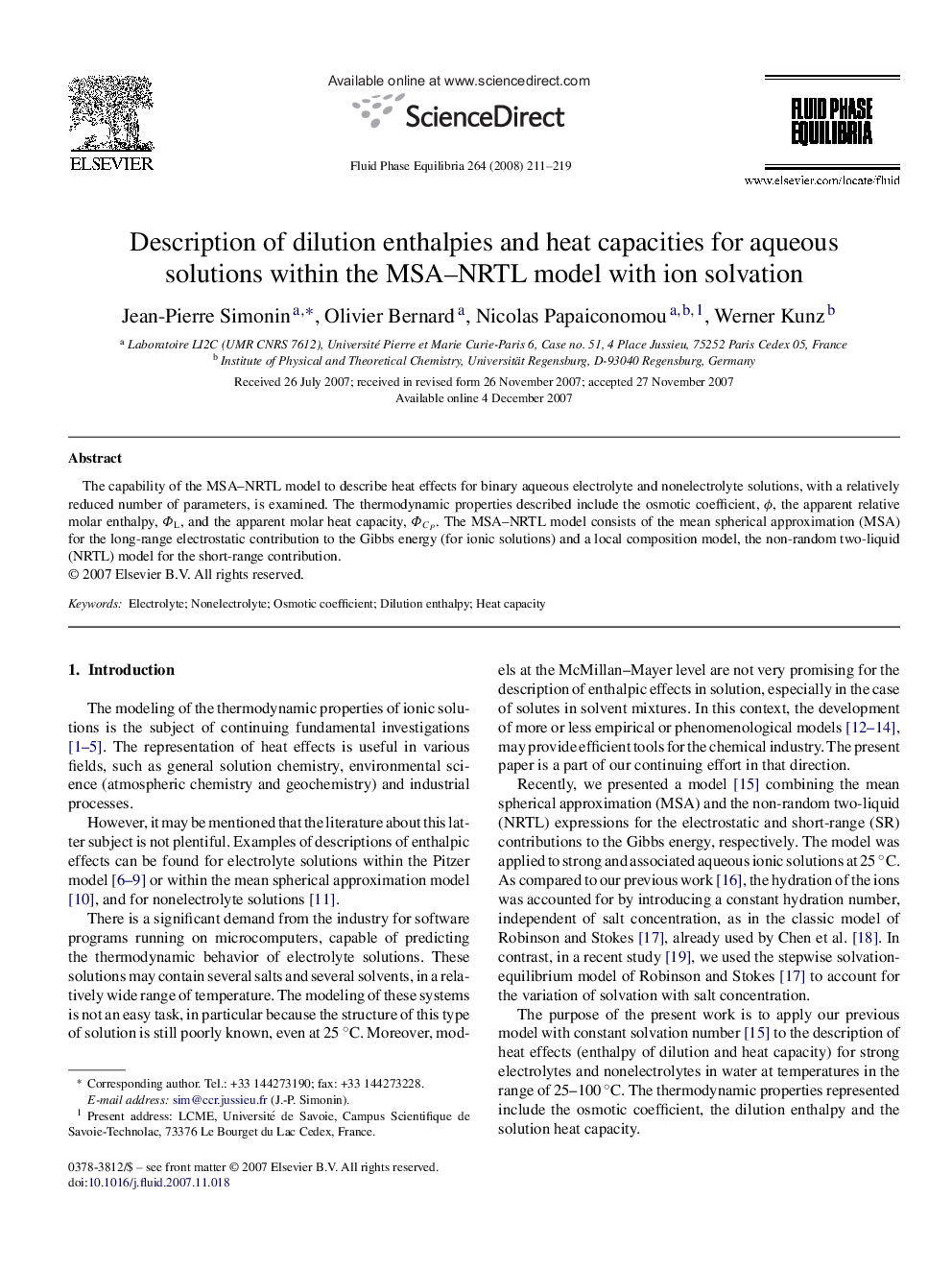| Article ID | Journal | Published Year | Pages | File Type |
|---|---|---|---|---|
| 203207 | Fluid Phase Equilibria | 2008 | 9 Pages |
Abstract
The capability of the MSA–NRTL model to describe heat effects for binary aqueous electrolyte and nonelectrolyte solutions, with a relatively reduced number of parameters, is examined. The thermodynamic properties described include the osmotic coefficient, ϕϕ, the apparent relative molar enthalpy, ΦLΦL, and the apparent molar heat capacity, ΦCPΦCP. The MSA–NRTL model consists of the mean spherical approximation (MSA) for the long-range electrostatic contribution to the Gibbs energy (for ionic solutions) and a local composition model, the non-random two-liquid (NRTL) model for the short-range contribution.
Related Topics
Physical Sciences and Engineering
Chemical Engineering
Chemical Engineering (General)
Authors
Jean-Pierre Simonin, Olivier Bernard, Nicolas Papaiconomou, Werner Kunz,
